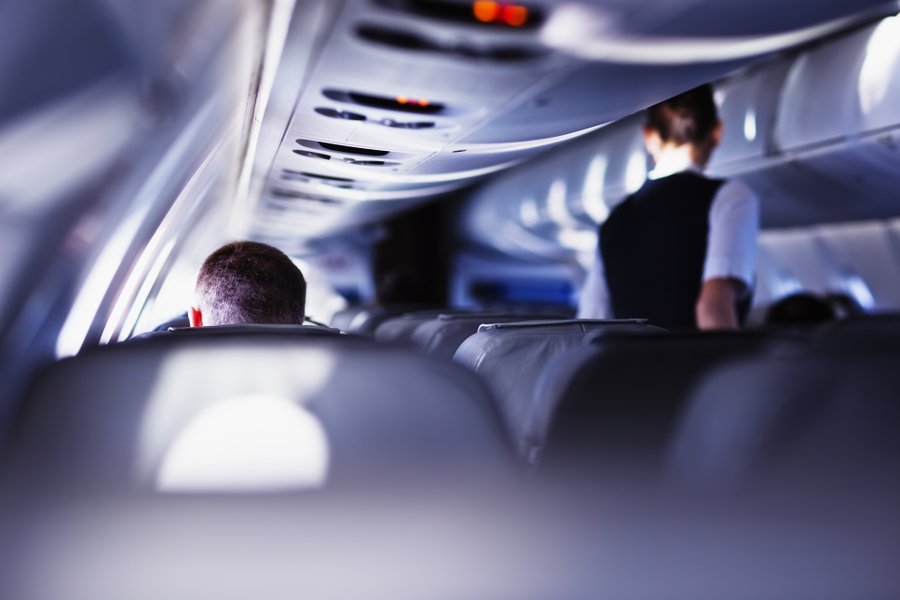
By Stephen Freibrun and Allan Bachan
How U.S. airports can offer adequate biosafety while still providing revenue-generating passenger experiences.
Airports today face unique, numerous, and ever-evolving challenges due to the COVID-19 pandemic.
The combination of a new focus on biosafety, the accelerated adoption of digital technologies, and changes to consumer behaviors while traveling, heighten the importance of a frictionless passenger experience for non-aeronautical revenue growth. Optimal passenger experiences curated by airports are especially important as we enter a period when airlines seem to be more focused on offering emotional comfort and biosafety at the expense of outstanding passenger experiences. The passenger journey will soon intertwine touchless and contactless technologies with the more mundane.
Passenger behavior changes
How are passenger behaviors changing? What behavioral modifications may remain after the pandemic ends?
Industry experts define the airport customer experience as the way a customer perceives their interaction with an airport; it is the sum of all touchpoints (in person or otherwise) a passenger has during their journey.
Airports must commit to the new reality that today’s customer experience becomes tomorrow’s expectation—and the challenge for airports is that this experience changes every day.
The newest behavioral change stems from a passenger’s innate desire to feel confident that their journey within the airport will be risk-free. While being vaccinated is the number one factor that will instill higher confidence, such things as floor stickers for social distancing, new holdroom seating configurations, cleaning when crews can be seen, and virtual town hall meetings to convey safety techniques in place can provide the emotional comfort people need to use the airport without worry.
But airports will need to change based on new expectations for safety.
- Touchless biosafety, including a digital health passport or vaccination visa
- Physical distancing in restaurant seating areas.
- Paperless boarding passes, bag tags, and tickets.
- E-commerce sites for retail purchases.
- The desire to physically distance throughout the airport.
- A touchless security checkpoint.
With the rapid adoption of touchless technologies, there are four new challenges, not only for the passenger, but for the airport as well. Understanding these challenges from the end user’s perspective (a customer-first mentality) provides a foundation for a well-conceived operations roadmap.
Strategic challenge 1: Passenger confusion
Friction blocks users from smoothly and painlessly completing their journey, so reducing friction points helps promote a more seamless journey for the passenger.
It’s been many years since the travel-ready process (the process of getting through security) has changed materially. The last change in the United States occurred in 2006 when the Transportation Security Administration (TSA) mandated that passengers separate liquids and aerosols from carry-on luggage after a thwarted trans-Atlantic airliner bombing attempt.
Now, with COVID-19, airports and airlines are rapidly introducing new technologies to passengers, from online food and retail orders to temperature screenings to immunity/health passports. Soon, airports and airlines may require proof of a negative COVID-19 test or vaccination.
While many age groups are quick to adopt new processes and technologies as part of the passenger journey, infrequent flyers may not be aware of these processes and technologies.
Communicating to passengers what lies ahead at their home airport is paramount to frictionless travel.
Strategic challenge 2: Lack of discretionary time
U.S. airports operate in an environment that increasingly puts pressure on the need for non-aeronautical revenues. Existing structures, however, often constrain airports in securing this revenue.
“Airports will need to ensure that new technologies fostering a touchless experience do not slow the travel-ready process, thereby decreasing a passenger’s available discretionary time to shop or dine”, Jason Terreri, Executive Director of Syracuse Hancock International Airport.
The less discretionary time a passenger has after proceeding through security, the less money they will spend, significantly impacting both concessions and the airport’s overall performance. For example, at airports as large as Hartsfield-Jackson Atlanta International Airport and as small as Huntsville International Airport in Alabama, the TSA uses tomography scanners, so passengers don’t have to remove electronics from carry-on luggage. To use a commercial term, speed of service at the checkpoint can contribute to more time for shopping and dining.
Strategic challenge 3: Culture change
Airports are under various commercial and political pressures to improve passenger experiences.
This improvement depends on the performance of airport employees and other staff to introduce and maintain technologies that allow passengers to do what they want, when they want to, and how they want to.
While mandates require the use of touchless technologies at checkpoints, pre-order airport concessions apps like Grab in Philadelphia can create an online digital marketplace for passengers to use when they choose.
“Technology is poised to be the critical driver for a quantum shift in how passengers experience their airport journey”, Alexis Higgins, CEO of Tulsa International Airport.
When airports have a customer-first mentality, introducing and applying new technologies is the key to unlocking improved customer satisfaction. We see it with car navigation and contactless banking, and soon we’ll see it with airports delivering new experiences. Airports should establish key performance indicators for new airport technologies and continually assess and improve them through performance analytics.
Strategic challenge 4: Technology adoption
Airports traditionally have viewed information technology as a necessary back-of-house support function rather than as a contributor to passenger experience improvements. Over the last five to 10 years, however, airports have started to recognize the strategic importance of future-ready technology to a modern airport experience. Technology improves efficiency, which leads to cost reductions, which, in turn, leads to improvements in the passenger journey.
“Covid has taught us to be more entrepreneurial in how we work with our suppliers, and this needs to remain post-pandemic”, Norbert Onkelbach, Chief Commercial Officer at Jorge Chavez International Airport (Lima).
Special regard for the aging population
It’s also important to understand that passengers may have experiences that vary due to their age or physical ability. Thus, airports must make special considerations for passengers with disabilities or lower mobility while still providing outstanding, memorable, and touchless experiences.
Many travelers require specialized services such as wheelchair assistance or help boarding or disembarking. Impeding these airport activities can adversely affect the airport experience. Airports must explore alternatives to technologies that ensure all individuals can receive the same seamless and safe travel experience at the airport.
While the adoption curve for personal electronic devices is significant, some passengers may not have direct access to an electronic device. Alternatives need to be in place in the event a traveler cannot use a biometric self-check-in.
Because many touchless components synergize with devices such as smartphones or wearables, stakeholders need to be aware that not all travelers might have access to these devices; they must ensure safe alternatives are in place to communicate information, facilitate airport activities, and provide unobstructed movement.
What airports need to do
Each of these four strategic challenges highlights the importance of touchless technology within airports and the need for airports to ensure that biosafety and other technologies improve the customer experience while keeping passengers safe and emotionally comforted.
Consider where your airport stands, and look at this issue from a business process management perspective:
- Focus on creating an airport able to adapt to ever-changing technology and customer desires.
- Diagnose where your airport stands on the delivery of a touchless experience.
- Map the passenger process and improve checkpoint efficiencies to drive post-security spending.
- Determine the risk exposure (level of safety) from a passenger’s perspective and score it.
- Document and communicate to employees all guidance on the passenger experience.
- Establish key performance indicators you can monitor and continually improve.
- Benchmark your progress against the progress at peer airports.
Biometrics are a key part of the airport’s touchless ecosystem; along with self-service and other touchless technologies, they’re becoming airport must-haves. But as vital as these technologies are to aviation in a COVID-19 (and possibly post-COVID-19 world), airports will need to manage them with passenger experiences firmly in mind.





Facebook comments